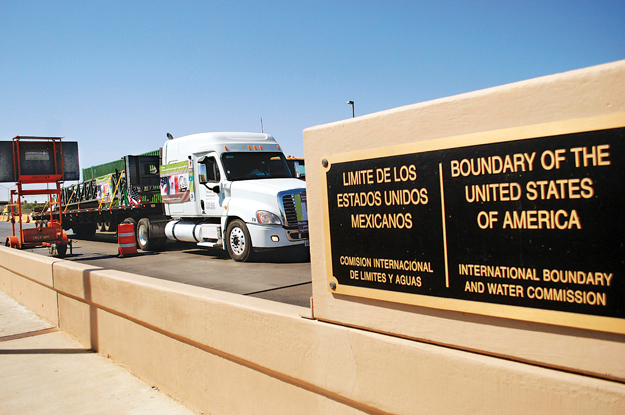In the new issue of Americas Quarterly, we asked people, “What would you tell the next U.S. president about Latin America?” To see other authors’ responses, click here.
Dear Mister / Madam President,
Trade is the most potent tool the United States can use to promote a vision of inclusive economic growth with equity across the Americas. Nevertheless, you will inherit a policy environment in which trade expansion will require an ever-increasing expenditure of political capital with Congress and the American people.
It’s a shame that trade has become a four-letter word during this election cycle in the U.S. The failure to prioritize the expansion of trade and economic integration with the nations of the Western Hemisphere would amount to unilateral disarmament on Washington’s part, in the face of growing interest in the region by others, including China — and even as Latin America seems more receptive to trade and investment integration with the U.S. in the wake of the commodities bust and the waning attraction of populism.
Squaring this circle will be a challenge, but the fact is that trade and economic integration directly promote U.S. and regional economic gains while also driving reforms and supporting a strategic U.S. approach to the Americas. Of course, trade must be part of a domestic U.S. economic development agenda, which should also include initiatives to promote broadbased economic growth and job creation, reform of the tax code, and a concerted focus on workforce development. Otherwise, trade expansion initiatives will fail to gain sufficient support for implementation. The debate over the Trans-Pacific Partnership (TPP) during this election cycle is the perfect example.
It is unambiguously in the U.S. foreign and economic policy interest to pass and implement the TPP. Without it, we are in effect rejecting closer economic and political relations with the Asia-Pacific region, including with Latin America. We would also be ceding economic and perhaps strategic leadership in Asia to China, and undermining our own efforts to build a trade expansion agenda in the Americas. The TPP would more closely link current freer trade partners in the region, thereby updating existing trade agreements, including NAFTA, and would support the supply chains that increasingly drive business decisions. At the same time, it would offer a platform to which additional Latin American nations might accede and still others might aspire. The TPP also offers an incentive for leaders to take difficult political steps to reform their respective economies as a means to create the conditions necessary for TPP accession. And once it passes, Colombia should be first on the expansion list.
At the same time, we need to be mindful of the enhanced competition that the TPP will create for already troubled nations in Latin America and the Caribbean, including the Northern Triangle countries of Central America. We should consider measures that will mitigate the negative impact — particularly on textiles and agriculture — while offering a transition period toward eventual TPP membership.
Other actions to expand regional trade and economic integration would be appropriate. Borders with Canada and Mexico, our first and third largest trade partners, respectively, must be enhanced, not restricted. Building walls will backfire. When crossborder trade becomes more complicated, economies contract. Infrastructure must be updated and prioritized. Regulations must be standardized.
Farther south, Brazil, representing 40 percent of Latin America’s overall economy, should clearly command higher interest for U.S. trade diplomacy than it currently does, both on economic and foreign policy grounds. While a bilateral freer trade agreement is not timely under current circumstances for a variety of reasons, the U.S. should seek to identify and develop creative measures, such as trade facilitation and cooperating in third-party countries. The gains from additional trade are too important to leave on the table, and pursuit of a new cooperative agenda at the highest levels could pay mutual dividends over time.
Finally, though it is not a party to the Pacific Alliance, the U.S. should highlight and promote the efforts of Mexico, Colombia, Peru and Chile to move toward full economic integration — not just trade expansion — on market principles. Washington should also support eventual enlargement of the Alliance to include additional countries.
As a tool for economic growth, trade is only effective when it’s used. The next president should use that tool to increase job creation and bolster the U.S. position across the region. It is time to restore the centrality of trade.
–
Farnsworth is vice president of the Americas Society and Council of the Americas in Washington, D.C. He previously served as a foreign and trade policy advisor in the White House, State Department, and Office of the U.S. Trade Representative.






